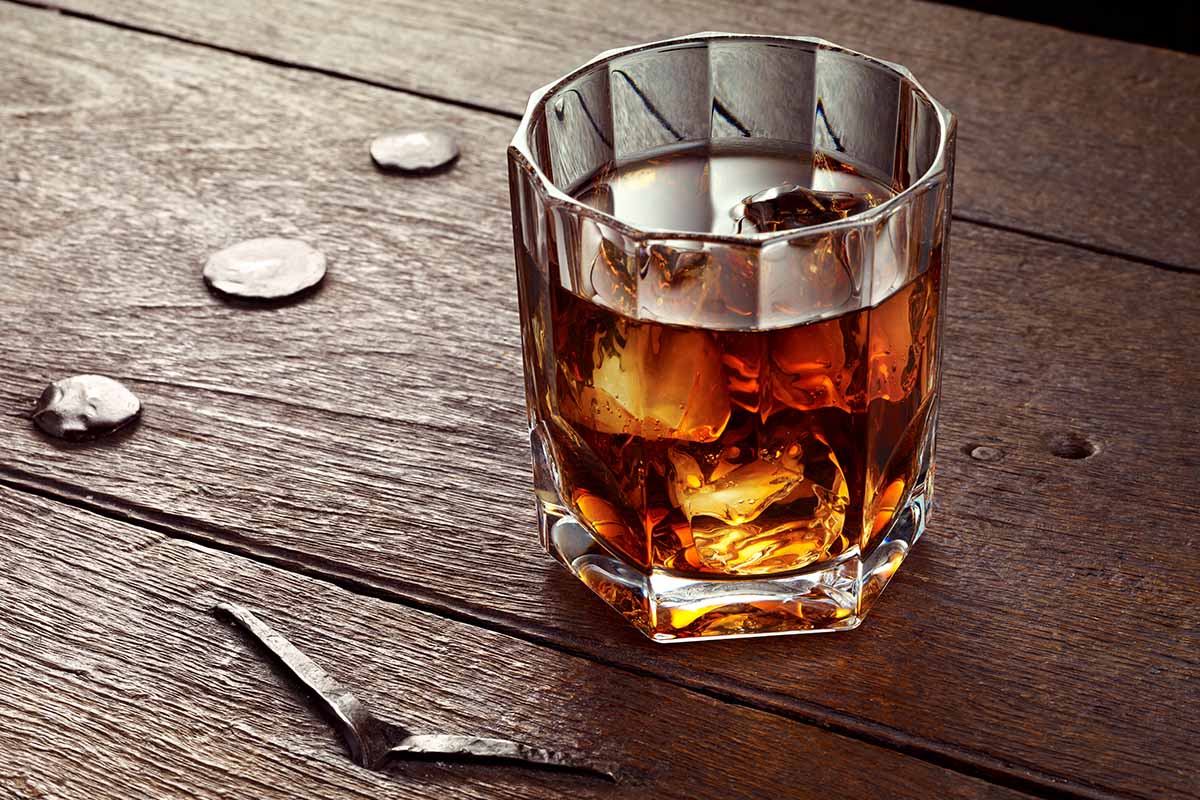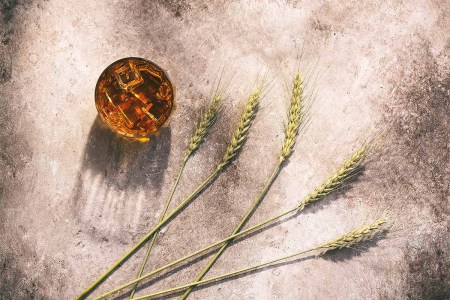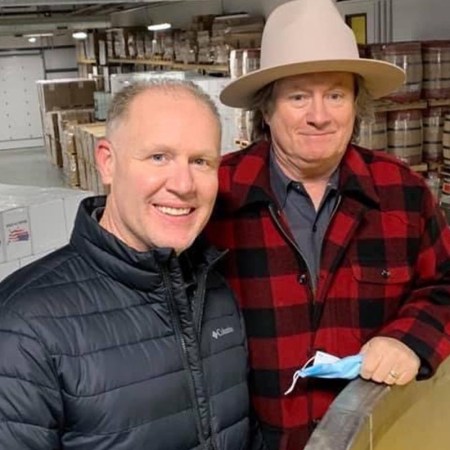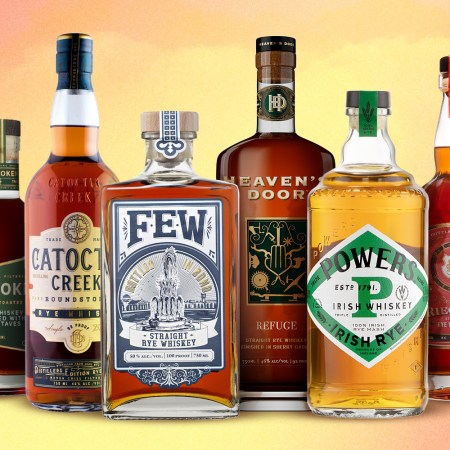The history of American rye whiskey dates back to the 18th century. And there are plenty of historical reasons why that colonial era still influences the rye you’re drinking today.
Rye developed regionally. As the late whiskey distiller Dave Pickerell noted, there were thousands of small-grain distilleries in New York, Pennsylvania, Virginia and Maryland in the late 1700s and early 1800s, and rye was the most prevalent grain. Meanwhile, corn was really only grown south of the Mason-Dixon line.
From those simple truths and an early lack of interstate commerce grew the first regional split in whiskey: Pennsylvania (or Monongahela-style) rye in the north and Maryland-style rye in the south. The former had no corn. The latter, however, saw a mellower and sweeter mashbill that featured a healthy dose of corn.
Today, you’ll see those styles relatively intact, but a whole crop (pun intended) of new rye styles are slowly making their mark across the United States as the popularity of rye whiskey once again skyrockets. Emphasis on that word slowly, however. “I think there are only a couple of regional rye styles today,” says Clay Risen, a veteran drinks writer and author of American Rye: A Guide to the Nation’s Original Spirit. “I think the most obvious is the one people often ignore or disparage: Kentucky rye. No one calls it that, and yet it’s distinctive: a low rye percentage, sometimes just a few ticks above 50%, with the remainder being corn and malted barley.”
What Exactly Is Rye Whiskey?
Clearing up misperceptions about the quintessential American whiskeyAs for the rest? Risen counts Pennsylvania/Old Monongahela (“with the caveat that there is still significant dispute over how it was originally made”), New York’s Empire Rye (as more of a law or framework than an organically derived style) and two decidedly non-regional distinctions: rye sourced from Indiana’s MGP (a 95/5 rye/malted barley you’ll find in a lot of sourced whiskeys) and 100% rye, a style that seems to go beyond old geographic boundaries.
“There is also a law on the books in Indiana defining Indiana rye, but it basically just requires that it be made in the state,” Risen says. “And there are people trying to resurrect Maryland rye, but because that was always a nebulously defined style, it’s a bit hard to resurrect. I’d watch that one in the coming years.”
Still, talk to distillers, bartenders and even lawmakers, and you’ll get some passionate arguments about a particular region or statewide “style” of rye. Conversely, you’ll also find plenty of people in the drinks industry who eschew historical and regional differences because, well, shipping grain or experimenting with mashbills today is a lot easier than it was in the 18th century.
“When I’m talking to customers about rye whiskey, I tell people about the mashbill, age and proof,” explains Mike Vacheresse, the owner of Brooklyn’s whiskey temple Travel Bar, which offers 65 different ryes. “Right or wrong, I never talk about the regions associated with the different mashbills. For me, I don’t find that people talk about ryes based on place.”
For Vacheresse, it’s more about how distilleries today are playing around with mashbills. He cites New Albany Distilling’s Ironweed Rye, which uses wheat as a flavoring grain, as well as Sonoma Distillery, which utilizes 10% cherrywood-smoked barley. These are not, obviously, historical mashbills.
You can certainly categorize whiskey outside of location. But some domestic distilleries still take pride in the history and regionality of their ryes. With that in mind, we asked a few drinks specialists from these whiskey producers to define what makes their provincial and historical ryes so unique.
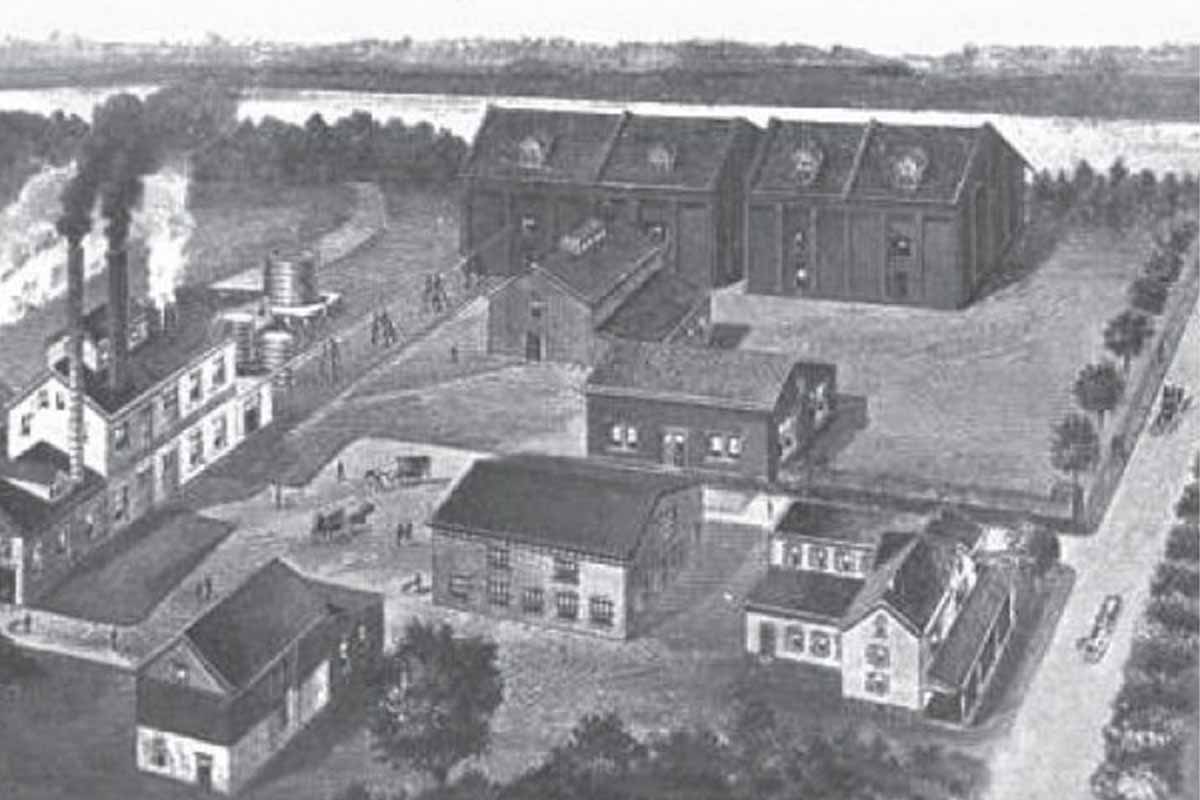
Pennsylvania Rye
“When folks talk about Pennsylvania rye, they’re referring to a regional-based whiskey that has a deep history in American whiskey dating back before the Revolutionary War,” says Jacob Looney, Director of Marketing, Visitor Experience and Operations of New Liberty Distillery, a craft distillery in Philadelphia that offers several bottles that serve as an homage to the whiskeys being created in the area in the early 18th century. “It’s not yet a recognized classification of whiskey but historically would have only used two grains in the mash bill —rye and barley malt — and of course been made in Pennsylvania.”
As for rye’s other name, Monongahela (or Old Monongahela, if aged), the farmers in Pennsylvania took their water from the nearby Monongahela River. “Later in the 19th century, you started to see distillers label some rye as Pure Rye Whiskey — this ensured that your mash bill was a minimum of 95% rye grain,” Looney says. “You don’t see that any longer, as you can’t label a spirit as pure, but there’s a growing group of us that hold to that style of mashbill and even to some of the historic distilling and fermenting methods.” New Liberty’s Kinsey Rye Bottled in Bond is actually 100% rye, malted and unmalted, that uses grain grown and malted within 20 miles of Philadelphia.
While not an official category, Pennsylvania rye is likely going to offer a bolder flavor with a peppery sensation that leans more towards the notes of tea and baking spices, rounded out with a little honeyed sweetness. “It’s proof of terroir in whiskey,” Looney says. “When you taste our whiskey versus rye from another region of the country, you’re going to notice a significant difference. Pennsylvania rye has no problem holding up to big flavors of bitters, fortified wine or even citrus.”
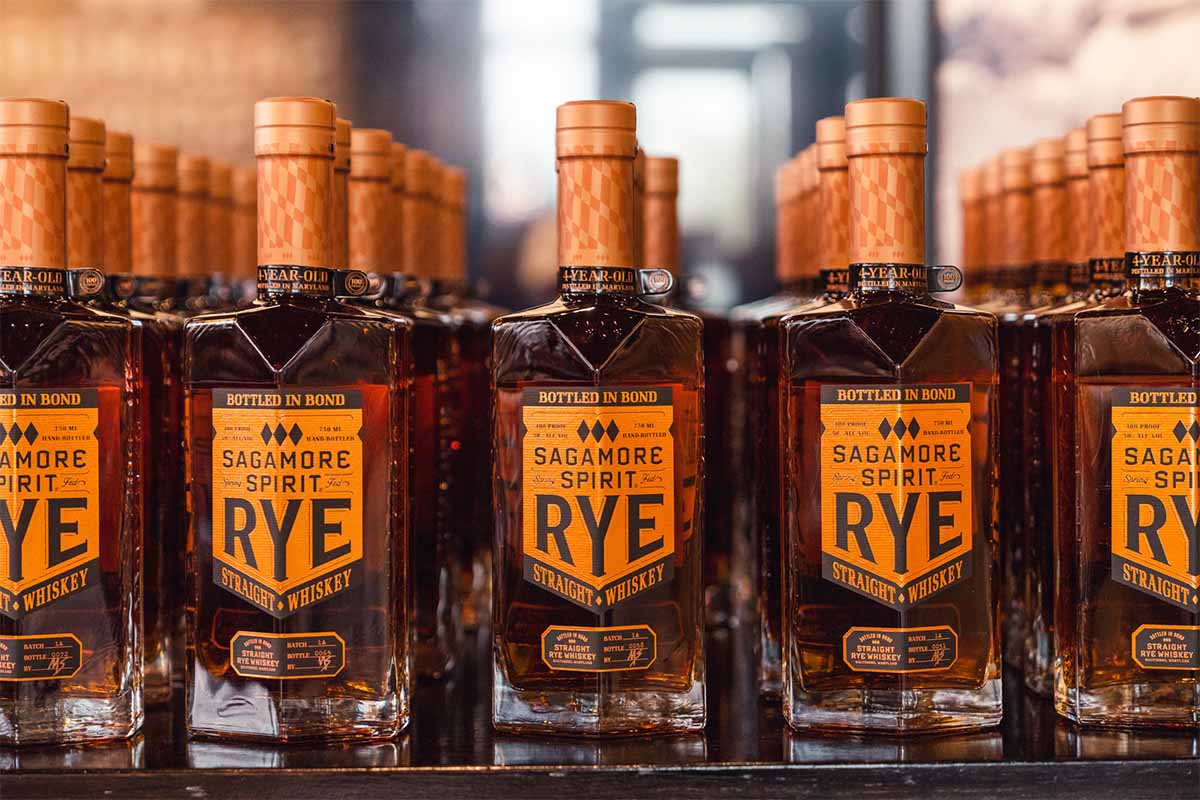
Maryland Rye
“Maryland rye has to be made with at least 51% rye grain, but that’s where the requirements end,” says Ryan Norwood, Chief Operating Officer of Baltimore’s Sagamore Spirit. “It’s typically made with more corn in its mashbill than ryes made in Pennsylvania or New York. That tends to balance out the rye spice, often giving it a slightly sweeter taste profile.”
The loose definition of Maryland rye also gives distillers a lot of flexibility; for Sagamore Spirit, that means all of their rye whiskies are made with a blend of two rye mashbills — a high rye and a low rye — that gives each expression a complexity and roundness.
Historically, rye in Maryland dates back to colonial times and goes up through Prohibition, when the state was the country’s third-largest producer of distilled spirits. Rye was the predominant grain grown at the time, making it the predominant grain used in distilling. As corn became a more popular (and easier) crop to grow, the popularity of rye waned. World War II and Prohibition shuttered most of the state’s distilling industry, but a revival started about 15 years ago. And that revival was popular enough that, today, rye whiskey is now Maryland’s official state spirit.
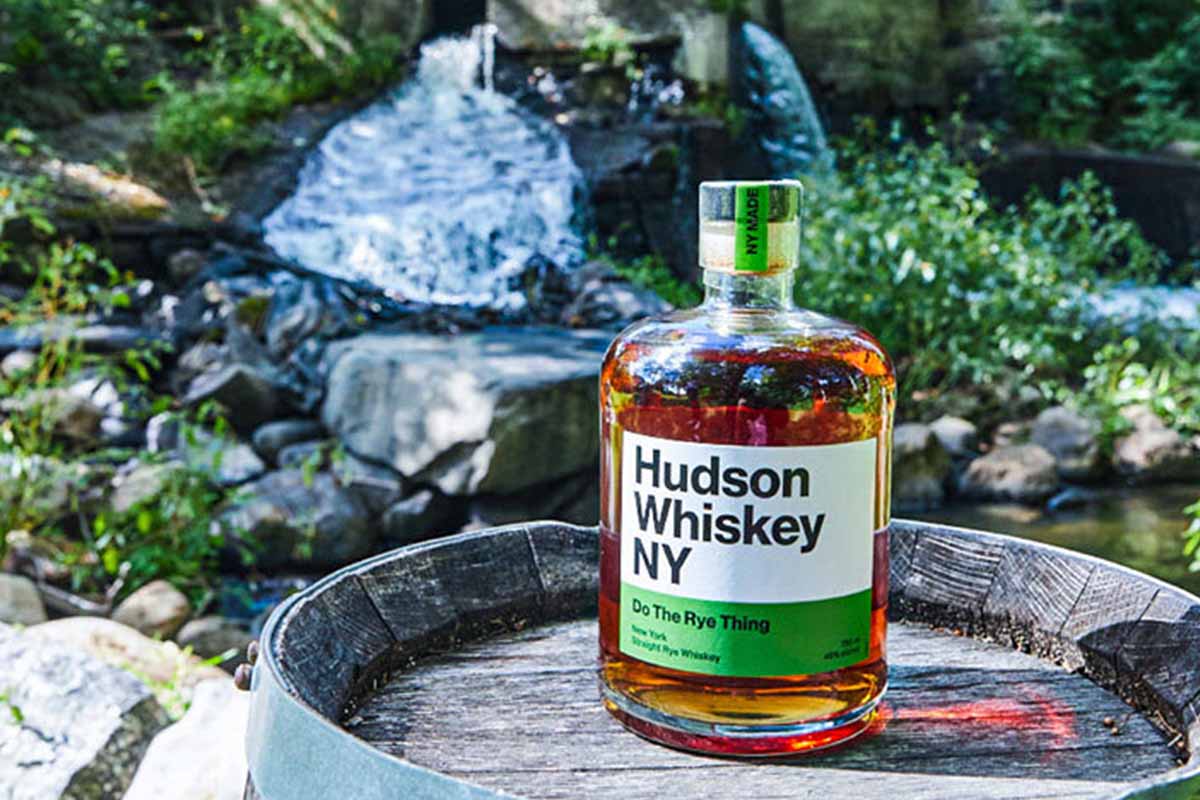
Empire Rye
Empire Rye is a category that came about in 2015 when a group of six New York distilleries created a consortium — the Empire Rye Whiskey Association — dedicated to establishing a whiskey style for New York. According to the requirements, a whiskey may bear the Empire Rye mark on its bottle only if it contains a mash bill made of 75% New York State-grown rye, is distilled to no more than 160 proof, is aged a minimum of two years in charred, new oak barrels at not more than 115 proof at the time of entry, and is mashed, fermented, distilled, barreled and aged at a single New York State distillery. (A blended whisky containing no less than 100% qualifying Empire Rye whiskies from multiple distilleries may be called Blended Empire Rye.)
Tuthilltown Distillery is home to Hudson Whiskey, one of the six Empire Rye distilleries. “Our goal is to link New York State as the leading producer of rye whisky,” says Jacob Tschetter, Visitor Experiential Manager at Tuthilltown Spirits Distillery & Hudson Whiskey. “Bringing rye whiskey back to New York was a big win for us. Not only were we the first bourbon ever made in the state, but we were also the first rye made post-Prohibition. It’s interesting because pre-Prohibition, rye was a very plentiful grain, and most local distillers in the Northeast were either distilling with rye or apple.”
If you’re looking for an Empire Rye, Hudson offers both a flagship (Do the Rye Thing) and, on occasion, some fantastic barrel-finished rye whiskeys. As for the larger category? The taste profile, according to Tschetter, usually includes notes of nutmeg, pear and cornbread, but you may discover additional flavors of pumpernickel, caramel, stone fruit, ginger, white pepper, cinnamon and/or clove.
We should note there are some excellent New York rye whiskeys that are not a part of the Empire Rye Whiskey Association but still utilize local grains and position themselves as historical whiskey brands — Brooklyn’s own Fort Hamilton in particular.
A Few Other Regional Rye Recommendations
Rye whiskey isn’t beholden to the few states listed above — nearly every whiskey distillery in the country offers up a bottle. Risen has a few suggestions. “Russell’s Reserve Rye is a dictionary-worthy example of Kentucky rye,” he says. “And Frey Ranch and Far North make phenomenal whiskeys that, while they don’t fit into a regional style, are luscious and herbal and very much indicative of where they are made (Nevada and Minnesota, respectively).” And for us? We’re big fans of the rye coming out of Colorado’s Laws Whiskey House.
When American Ryes Aren’t That Regional (or Even American)
It’s no secret that a lot of American distilleries use rye grown far outside of their state borders, including quite a few that source from Canada. The new Jack Daniel’s Bonded Rye, for example, utilizes a lot of rye grain from the western parts of our neighbor to the north (which Chris Fletcher, Jack Daniel’s Master Distiller, had no problem admitting when we spoke earlier this fall.) The most common rye whiskey import, meanwhile, arrives via Calgary’s Alberta Distillers, which has a huge supply of well-aged rye. “It’s very, very good,” Risen says (we agree). “And with rye these days, I think it’s more just about being distinctive.”
Join America's Fastest Growing Spirits Newsletter THE SPILL. Unlock all the reviews, recipes and revelry — and get 15% off award-winning La Tierra de Acre Mezcal.
